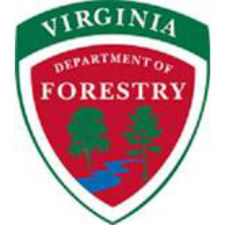
The culprit appears to be a very tiny insect known as a gall wasp. There are many species of gall wasps, particularly those that affect oak trees. These ‘wasps’ do not sting, and are rarely ever noticed by the public. However, this type of insect injects eggs into plant tissue, which forms a swelling or ‘gall’ around the injection site. Inside a hollow space within the gall, the developing egg hatches into a larva, and ultimately emerges from the gall as an adult wasp, repeating the cycle one or more times each year depending on the species. Each species of gall wasp specializes on a particular host and plant part, and each species produces a unique gall. Thus, there are a wide variety of plant galls that differ in shape, size, color, texture and the part of the plant affected (leaves, twigs, buds, flowers, etc). While gall wasps are a normal component of every forest ecosystem, they are generally kept under control by other insects and are not typically abundant enough to cause serious damage to trees and shrubs. However, in rare instances they can become so abundant that their galls can cause noticeable damage.
VDOF Forest Health Specialist Dr. Chris Asaro said, “In this case, we are dealing with ‘jumping oak galls’ – also known as ‘oak button galls’ because of their button-like shape. These galls are quite small – about the size of a sesame seed – and are located on the underside of white oak leaves. They are orange in color and dislodge easily from the leaves when brushed lightly. Each gall leaves a ‘pock-mark’ of dead cells at the point of attachment to the leaf. These dead spots on the leaves can sometimes be so abundant that they begin to run together, eventually enveloping and killing an entire leaf. Many trees have lost 50 percent or more of their foliage, and some trees have lost almost 100 percent.”
Outbreaks of this particular gall wasp are not very common, according to Dr. Asaro, but they have occurred before in this area. Typically, gall outbreaks are short-term in nature, and gall wasp populations soon crash on their own after a year or two due to natural predation by other insect species.
“While the current defoliation may seem alarming and sudden to many folks, the good news is that most trees will recover without too much long-term damage,” Asaro said. “While defoliation can be a significant stressor, a tree that is otherwise healthy will normally start to produce new leaves and survive, even when defoliation is near 100 percent.”
On the other hand, trees that experience severe defoliation for two or more years in a row are more likely to succumb, especially when exposed to other stressors. Many oaks across Virginia, especially older ones, often suffer from decline. Oak decline is a complex condition that can be due to multiple factors acting in concert. These factors include site-related stressors, such as poor soil and mechanical damage to the roots or tree bole from mowing or other equipment or from recent construction and soil disturbance. Areas that have experienced severe drought over the past10 years also see elevated rates of oak decline; even if we aren’t experiencing drought conditions right now, drought impacts can often be seen years later after root disease sets in and slowly weakens trees. Weakened trees become more vulnerable to insects and diseases, which contribute to decline.
northern virginia Senior Area Forester Terry Lasher said, “Most people don’t notice tree decline because the initial symptoms can be subtle and occur internally or below-ground. Trees can appear to die ‘suddenly’ when they reach a critical point, but, in most cases, they were rotting from the inside for many years.”
Homeowners should not panic, though, if their trees look bad during the summer months due to brown leaves or defoliation. If the tree is otherwise healthy, it can withstand a lot of defoliation before any long-term health impacts set in.
Lasher said, “Even if an oak tree looks bad for the rest of the year, it’s best to wait until the following spring to see if it leafs out normally. This usually indicates the tree is doing well.”
If there is any concern for a tree’s health, especially a large tree of any type that is near a house or other structure or is potentially hazardous to pedestrians, it is recommended that the homeowner contact a certified arborist for an evaluation.
Lasher said, “Often, it is much cheaper to spend money on prevention and maintenance than to take down a large, potentially hazardous tree – a process that can cost thousands of dollars.”










